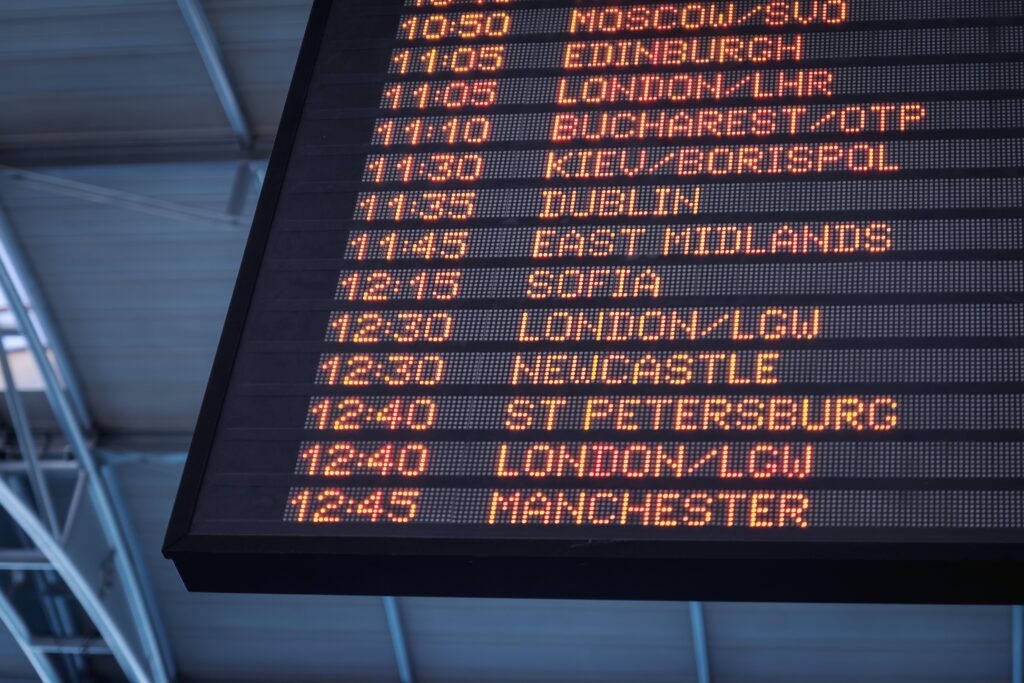New Caledonia Transportation Guide
New Caledonia Transportation Guide: Transportation relies on cars for exploring the main island. Domestic flights connect outer islands. Taxis and buses available.


New Caledonia Transportation Guide – International Airports
New Caledonia has two international airports:
La Tontouta International Airport (NOU): Located approximately 45 kilometers northwest of Nouméa, the capital city of New Caledonia, La Tontouta International Airport is the main international gateway to the territory. It serves as the primary entry point for travelers arriving from overseas destinations. The airport offers flights to and from various international destinations, including Australia, New Zealand, Fiji, French Polynesia, Vanuatu, and Japan, among others. La Tontouta International Airport is well-equipped with facilities such as duty-free shops, restaurants, car rental services, and transportation options to Nouméa and other parts of New Caledonia.
Magenta Domestic Airport (GEA): Magenta Domestic Airport, located near the center of Nouméa, primarily serves domestic flights within New Caledonia. While it primarily caters to domestic travel, there are also a few regional flights to nearby destinations in the Pacific. Magenta Domestic Airport offers connections to several islands within New Caledonia, including the Loyalty Islands, Isle of Pines, and the smaller islands in the archipelago.
National Airports
New Caledonia has several domestic airports that serve as important transportation hubs within the territory. Here are the main national airports in New Caledonia:
La Tontouta International Airport (NOU): Although La Tontouta International Airport is primarily an international airport, it also operates domestic flights within New Caledonia. Domestic airlines connect La Tontouta with various destinations within the territory, including the Loyalty Islands, Isle of Pines, Lifou, Ouvéa, and other smaller islands.
Magenta Domestic Airport (GEA): Magenta Domestic Airport, located in Nouméa, serves as a domestic hub for flights within New Caledonia. It offers connections to various domestic destinations, including the Loyalty Islands (Lifou, Maré, Ouvéa), the Isle of Pines, and other smaller islands.
Ouvéa Airport (UVE): Ouvéa Airport is located on the island of Ouvéa, which is part of the Loyalty Islands. It serves as a domestic airport, connecting Ouvéa with Nouméa and other nearby islands in the Loyalty Islands group.
Maré Airport (MEE): Maré Airport is situated on the island of Maré, another one of the Loyalty Islands. It provides domestic flights between Maré and other destinations in New Caledonia.
Lifou Airport (LIF): Lifou Airport is located on the island of Lifou, which is the largest island in the Loyalty Islands. It operates domestic flights connecting Lifou with Nouméa and other destinations in New Caledonia.
New Caledonia Transportation Guide – Trains
New Caledonia does not have a train system. As an archipelago in the South Pacific, the primary modes of transportation within the territory are air travel, maritime transportation, and road networks.
Airports, both international and domestic, provide convenient connections between the main island of Grande Terre and other islands within New Caledonia. Domestic flights are operated by local airlines and connect various destinations, including the Loyalty Islands, Isle of Pines, and smaller islands in the archipelago.
Maritime transportation plays a crucial role in inter-island travel. Ferries and boats are used to transport passengers and cargo between different islands, providing access to remote areas and islands with limited or no airports. These services are mainly operated by domestic shipping companies.
On land, the road network is well-developed on the main island of Grande Terre, particularly in and around major urban areas such as Nouméa. Renting a car or using public transportation options such as buses and taxis are common ways to get around on the main island.


New Caledonia Transportation Guide – Buses
New Caledonia has a public bus network that provides transportation services on the main island of Grande Terre. The bus system is operated by the Société Calédonienne de Transport en Commun (SCTC) and offers routes connecting various towns, suburbs, and tourist destinations.
Here are some key points to know about the bus system in New Caledonia:
Nouméa: The capital city of Nouméa has an extensive bus network that covers the urban area and its suburbs. Buses in Nouméa are known as “Karueis” and are easily recognizable with their green and white color scheme. They provide convenient transportation options for residents and visitors to travel around the city and its surroundings.
Intercity Routes: The bus network extends beyond Nouméa, connecting other towns and regions on Grande Terre. Intercity buses operate on scheduled routes, serving destinations such as Koné, Bourail, Poindimié, and Koumac, among others. These routes provide opportunities to explore different parts of the island.
Bus Stops and Tickets: Bus stops are typically marked with signs indicating the bus route and schedule. Tickets can be purchased directly from the bus driver when boarding the bus. It’s important to have the exact change for the fare as the drivers may not provide change.
Rural Areas and Islands: It’s worth noting that in more rural areas and smaller islands, the availability of bus services may be limited or non-existent. In such cases, other modes of transportation such as rental cars, taxis, or boats may be necessary to get around.
Tourist Services: In addition to the regular bus services, there are also tourist-oriented bus tours and excursions available, particularly in popular tourist areas like the Isle of Pines and the Loyalty Islands. These tours offer guided transportation to popular attractions and points of interest.


We recommend
New Caledonia travel tips
Our guide offers essential New Caledonia travel tips and insights for an unforgettable journey. Plan your trip with us!
New Caledonia Transportation Guide – SIM Cards
Obtaining a SIM card in New Caledonia is generally straightforward, and it’s a useful way for travelers to stay connected. Here’s a guide:
Providers: The main telecommunications providers in New Caledonia are OPT (Office des Postes et Télécommunications) and other local carriers.
Purchase Locations: SIM cards are available at telecommunications provider stores, official retailers, and sometimes at the airport upon arrival.
Identification: Bring a valid ID, such as your passport, as you may need it to register and activate the SIM card.
SIM Card Cost: SIM cards are usually affordable and may come with initial credit. Prices may vary, so inquire about the available options.
Top-Up: Recharge your SIM card with credit for calls, texts, and data. Top-up vouchers are available at various locations.
Data Packages: Purchase data packages based on your needs. Providers offer various plans for data, calls, and texts.
Coverage: Confirm the network coverage, especially if you plan to explore remote areas. The main island generally has good coverage.
Unlocking Phones: Ensure that your phone is unlocked before arriving so it can accept the local SIM card.
Alternative Communication: Wi-Fi is available in many accommodations and public places. Consider having multiple communication options.
Emergency Services: Save local emergency numbers in your contacts for quick access.
Always verify the information’s reliability and timeliness, as telecom offerings may change. If you have a specific provider in mind, check their official website or contact them directly for the latest details on services and packages.
Currency Converter
Currency Converter EUR/USD: Sun, 1 Jun.
Unit Converter
New Caledonia Transportation Guide – Maps
What map do you need?
Choose your destination
More information about this country






